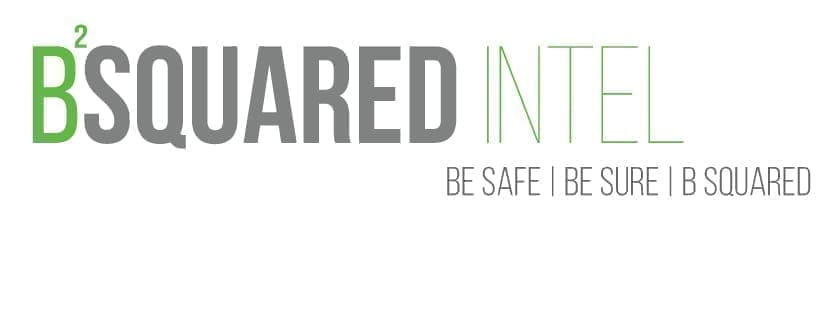Welcome back to Bsquared Intel’s Project Warwalk. If you would like to get up to speed, click here to go to the posts you missed and to learn about the project or reference our glossary.
Last week we broke down the numbers. Today we’re going to explore what the data we collected can show with regard to issues related to WiFi. We’ll highlight cyber security issues along with things that can affect the strength of your WiFi signal.
The first thing to talk about is signal bleed. This is where a wireless signal from one area enters another area. Pertaining to this project, this means a wireless signal transmitting from one house into another. This poses a risk to the WiFi network if there is weak or no protection of the access point. This would mean using anything less than WPA2 would allow someone to easily access the wireless network whose signal bled into their home. This leads to the first problem.
The first problem is accessing networks, wireless or not, without permission. This is illegal. This is unauthorized access and someone can be criminally charged at the state of federal level. On the federal side of things, this unauthorized access falls under the CFAA (Computer Fraud and Abuse Act).
Continuing with unauthorized access to a network, if your router, for example, is not protected, it would allow a person the opportunity poke around your home network looking to see what is exploitable. They can then load malware on network connected devices, whether it’s a phone or a laptop/desktop. This could turn these devices into zombies, which a bad actor controls to launch attacks. A zombie computer may become part of a botnet. The malware could also be used to spy/surveil on your or your family. You could even fall victim to ransomware, if the attacker is able to gain access to your computer. Once inside your home network they may be able to gain access to webcams or systems like Ring to surveil you. Another thing that could happen is if your neighbor connects to your home network, whether they have permission to or not, and their device is infected, the malware can spread on your LAN.
Let’s talk about your neighbor’s WiFi. Like the paragraph above, if you access their WiFi without permission (DON’T!) or if they gave you permission to, there is the possibility your phone, tablet, or laptop could get infected with malware. If the malware isn’t detected, when you connect to your home network, the malicious code can also seek out other devices connected to your LAN. If you saved the network name to your device, every time you’re out of range of your home network and in range of your neighbor’s, your phone, for example, will automatically connect to their wireless access point. Any infections on their home network has the possibility to jump to your device and then when you are in range of your wireless access point, the malware can then spread on your network. It also works the other way too from your home to theirs.
Lastly we turn to non-malicious issues with WiFi. Several things can affect the signal strength of your wireless router. Let’s start with your house first.
Your wireless signal is converted into analog radio waves that travel through the air. These signals travel in straight lines. Where you place your router can affect the ability of where in the house you can connect devices to the wireless network. Walls, brick, concrete, metal, furniture, windows/mirrors(they reflect the signal), and appliances are some things that can greatly reduce the strength of your wireless connection. Next, let’s move to the outside of your house to learn how your neighbors are affecting the strength of your WiFi signal.
If you live in a neighborhood where your next neighbor in any direction is 1 mile(1.6km) away, the effect on your WiFi signal strength will be unnoticeable. On the other hand, if you live in a densely populated area, whether it’s a city, or highly developed community, you may notice that your connection to the Internet keeps dropping or is painfully slow. This is because all the signals from your neighbors are crowding, and sucking up, the bandwidth. The most likely cause is everyone is on the 2.4GHz range. By switching to the 5GHz channel, you may notice an improvement of your wireless connections.
This is a good spot to bring this article to a close since the next one will build off of this post.
See you all in the next article.

